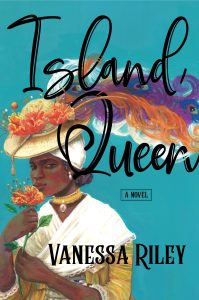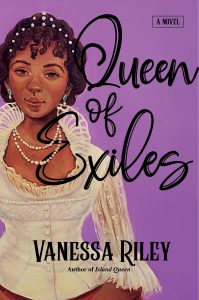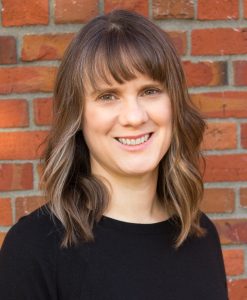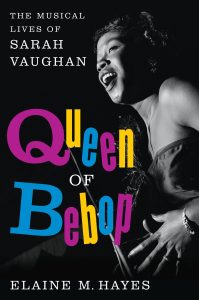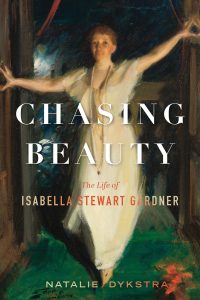Talking About Women’s History: A Whole Bunch of Questions with Vanessa Riley
Honored as the 2023 Georgia Literary Fiction Author of the Year, Vanessa Riley is an acclaimed author known for captivating novels like Island Queen, which is based on the true story of Dorothy Kirwan Thomas, who rose from slavery to become one of the wealthiest and most powerful landowners in the colonial West Indies, and Queen of Exiles, which tells the story of Marie-Louise Christophe, Haiti’s first and only queen.. Riley’s works spotlight hidden narratives of Black women and women of color, emphasizing strong sisterhoods, diverse communities, and power across historical fiction, romance, and mystery genres. With a doctorate in mechanical engineering from Stanford University, Vanessa brings a research-oriented approach to highlight inclusivity in her storytelling about Caribbean, Georgian, and Regency eras, resulting in over twenty-five published titles. As a member of various literary organizations, she advocates for diverse voices and storytelling.
Take it away, Vanessa!
You have written several historical novels based on the lives of real-life Caribbean women during the Georgian period. What path led you to their stories?
The path to discovering the stories of real-life Caribbean women during the Georgian period is part of my heritage. I was told as a child in smaller tales of these exploits. As an adult who loves history, I think I am more attuned to finding these treasures. My passion is to rediscover real Black women and women of color who have impacted history. Their stories are often hidden or purposefully obscured. My desire is to shed light on hidden histories and showcase the resilience and strength of women who've been overlooked in traditional historical narratives, our written history books, our conscientiousness.
You have written books based on real historical figures and others that place a fictional woman in a historical setting. How does your writing process differ when you are writing about a real person as opposed to a completely fictional character?
When writing about real historical figures, my process involves extensive research to ensure accuracy while delving into the emotions and motivations. I try to understand the global politics of their situation, as none of history exists in a vacuum. For fictional characters in historical settings, I have more creative freedom to craft their journeys while staying true to the historical context. These fictional characters often represent themes that support the narrative or explain what is happening in the world.
How do you walk the line between historical fact and fiction in a novel?
Balancing historical fact and fiction requires meticulous attention to detail, especially as this may be a reader's first introduction to this history. I want to provide as many details as possible, including the art of the time period, to immerse readers. If I send you Googling to learn more, I've done my job.
What types of sources do you rely on to create rich fictional characters who are historically accurate?
To create rich, historically accurate characters, I rely on a variety of sources such as primary documents, historical accounts, and scholarly research. The art of the time period is also important as it adds depth and authenticity to the storytelling.
You include detailed author’s notes in your novels that provide historical documentation for the stories you tell. What inspired you to include those notes?
Including detailed author's notes is inspired by my commitment to transparency and providing readers with behind-the-scenes insights into the historical context of my novels. Readers love these glimpses into how the stories come together.
What do you find most challenging or most exciting about researching historical women?
Researching historical women is both challenging and essential due to misogyny, the infantilization of women's roles, and the intersection of feminism and racism. Many would rather believe that Black women and women of color are limited to enslavement, that they played no part in women seeking the right to vote, etc. It's crucial to amplify marginalized voices and reclaim their rightful place in history.
What was the most surprising thing you've found doing historical research for your work?
One surprising discovery during historical research was the depth of resilience, strength, and elegance in the history of these powerful women. We need these stories to strengthen and inspire women everywhere, showing that obstacles can be overcome with grace and determination.
Are there special challenges to researching women of color, who in some ways have been doubly erased from history?
Researching women of color presents unique challenges due to historical erasure and lack of documentation. However, nothing is more rewarding than restoring these women for modern readers to know and become familiar with.
What work of women's history have you read lately that you loved? (Or for that matter, what work of women's history have you loved in any format? )
I’m currently enjoying works like The Four Winds by Kristin Hannah and The Other Princess by Denny S. Bryce, which explore women's experiences in different historical contexts.
Do you think Women's History Month is important and why?
Women's History Month is important as it honors those who came before us, paving the way and holding lanterns to show us how to be resilient and succeed. It's a time to reflect on the contributions of women throughout history and celebrate their achievements.
Interesting in learning more about Vanessa Riley and her novels?
Check out her website: www.VanessaRiley.com
Follow her Facebook page: Vanessa Riley Author
Follow her on Instagram: vanessarileyauthor
Follow her on the site previously known as Twitter: @VanessaRiley
***
Come back tomorrow for three questions and an answer with Rowena Kennedy-Epstein Author of Unfinished Spirit: Muriel Rukeyser's Twentieth Century
Talking About Women’s History: Three Questions and an Answer with Elaine Hayes
Elaine Hayes is the author of the critically acclaimed biography Queen of Bebop: The Musical Lives of Sarah Vaughan (Ecco, 2017). Recognized as a best book of the year by Amazon, Publishers Weekly, Booklist, and the Washington Post, Queen of Bebop tells the story of this iconic vocalist’s rise from a choir girl in Newark, New Jersey, to an innovator at the forefront of modern jazz, a pop star, and ultimately a vocal legend, whose voice transcended boundaries of genre, race, and class. Elaine received her doctorate in musicology from the University of Pennsylvania and currently lives in Seattle with her husband, son, and Archie the miniature poodle.
I am thrilled to have Elaine here on History in the Margins on March 27, 2024, just in time to celebrate Sarah Vaughan’s 100th Birthday.
Take it away, Elaine:
When did you first become interested in big band “girl singers” and women in jazz? What sparked that interest?
Sarah Vaughan was my entry point into girl singers, big bands, and really, jazz more generally. I was a classically trained pianist, who hadn’t thought much about jazz until a college roommate played lots of Sarah Vaughan. I was immediately drawn to her voice, how she used it, and the sheer presence and authority she exuded when she sang.
I didn’t really know that much about Sarah the woman until a couple years later when, as a graduate student, I wrote a research paper about her for a seminar on women in jazz. I learned more about her artistry and creative process. The challenges she faced as a woman working in the male-dominated world of jazz. And how the narratives surrounding both her professional and personal life shaped her legacy. I realized that there was a bigger story to tell—one that would provide insights not only into Sarah Vaughan but also vocalist and women in jazz more generally.
Writing about a historical figure like Sarah Vaughan requires living with her over a period of years. What was it like to have her as a constant companion?
Yes, Sarah Vaughan really did become my constant companion, first as a graduate student and then a decade later as her biographer. Spending five days a week, for years, thinking about a single person, investing in her life and career, triumphs and challenges, can be very intimate. Even though we never met, and I didn’t have a relationship with her in the traditional sense, I felt a close emotional bond. Vaughan’s power as an artist magnified this connection. She possessed an uncanny ability to capture the full spectrum of human experiences and emotions in her singing. And I, like so many other listeners, felt as if I knew her and she knew me.
I am not a sentimental person, but I cried as I wrote, and even edited, the final chapter and epilogue of Queen of Bebop. The life of a person who I admired and cared deeply about was ending, and so was my journey with her. There was a very real sense of mourning and loss.
As I re-visit the material for Vaughan’s centenary, however, it is speaking to me in a new way. It’s like reconnecting with an old friend that I hadn’t realized I’d missed. I’m enjoying their company again and remembering why we became friends in the first place.
We’re all familiar with the challenges of finding sources for writing about women from the distant past. What are the challenges of writing about women from the early and middle twentieth century?
In the past 20 years, writing about a public figure like Sarah Vaughan has, in fact, gotten much easier. When I began the project as graduate student, it was hard to find source material. If I wanted to go beyond the clip folders collected by two or three specialized libraries, I needed to read full runs of publications—on microfilm! This was incredibly time consuming (and nausea inducing). So I limited myself to trade publications, how critics, usually white critics, responded to her singing. This really narrowed the story I could tell.
But now, thanks to the emergence of searchable digital newspaper and magazine archives, there is a wealth of source material. With patience, persistence, and perhaps most importantly, good organization, researchers can find amazing things.
This allowed me to reconstruct Vaughan’s career with a level of granularity and precision which had been missing. It also helped me incorporate perspectives that had been underrepresented or overlooked in past scholarship. A survey of the Black press, for example, added complexity to her story by providing insights into how Black communities understood Vaughan and her singing.
And, finally, because of these digital resources, I was able to re-insert Vaughan’s own voice back into her narrative. (Past biographers relied on contemporaries and acquaintances to tell her story.) When I began the project, I couldn’t find many interviews with Vaughan, and I assumed she simply did not give that many. This was not the case. Although she was a reluctant, often hostile interview subject, she regularly spoke to the press. By digging into this newly accessible historical record, I rediscovered many of these interviews, making it possible for Vaughan to tell us, in her own words, about her worldview and approach to making music. This was huge.
A question from Elaine: Now that I’ve told you about the wealth of source material I was lucky to find about Sarah Vaughan, I’m interested in learning more about how a historian like you, who does study women from the distant past, recreates their life stories.
In working on my last book, Women Warriors, I faced a number of challenges as far as sources were concerned.
Because it was a global history, I was dependent on secondary sources and translations of primary sources in languages I could read. (And mightily frustrated by the hints about sources that had not been translated.)
Even when I had access to sources, they were often meager. In the case of Boudica for instance, who led her people in a revolt against the Romans in 61 CE, we are limited to three written sources, with some help from modern archeology. All three written accounts are told from the perspective of her enemies. The Roman historian, Tacitus, who was born five years before the revolt, wrote two separate accounts of Boudica’s revolt. He could at least claim secondhand knowledge of the events on which he reported: his father-in-law served as a member of the Roman governor’s staff during the revolt, and there is evidence that Tacitus interviewed other veterans of the rebellion. Our only source is a fragment of an account written roughly a hundred years later by Dio Cassius, which appears in a a selection of readings compiled by a Greek monk in the eleventh century CE. With primary sources such as these, one must read and write warily.
My current book is a different story. There is a great deal of material by and about its subject, Sigrid Schultz, the Chicago Tribune’s Berlin bureau chief from 1925 to 1940. And even so there are holes I was not able to fill.
***
Interested in learning more about Elaine Hayes’ work on Sarah Vaughan and other women of jazz?
Check out her website: https://elainemhayes.com/
Follow her Facebook page: Sarah Vaughan, Queen of Bebop
***
Come back tomorrow for a whole lot of questions with novelist Vanessa Riley.
Talking About Women’s History: Two, or Possibly Five, Questions and an Answer with Natalie Dykstra
Natalie Dykstra grew up in the Midwest, first near the shores of Lake Michigan, then in a suburb west of Chicago. She received her undergraduate degree in Classics followed by graduate degrees in American Studies at the University of Wyoming and the University of Kansas. She won a National Endowment for the Humanities Fellowship for her work on Clover Adams: A Gilded and Heartbreaking Life as well as grants from the Schlesinger Library and the Massachusetts Historical Society, where she was elected an honorary fellow in 2011. She received a 2018 Public Scholar Award from the National Endowment for the Humanities to support her newest book, Chasing Beauty: The Life of Isabella Stewart Gardner by Mariner Books, an imprint of HarperCollins. This work also has been supported by the inaugural 2018 Robert and Ina Caro Fellowship sponsored by the Biographers International Organization (BIO). She has served as a board member of BIO since 2020.
She is emerita professor of English and senior research professor at Hope College, where she taught writing, literature, and the arts for twenty years. She lives with her husband in Waltham, Massachusetts.
Chasing Beauty launches today and I am delighted to welcome Natalie Dykstra back to History on the Margins. She participated in Three Questions and an Answer several years ago, when she was in the process of writing the book. I strongly urge you to go back to that post, in which she had interesting things to say about Isabella Stewart Gardner and writing biography. Then come back and see what she has to add to the discussion today.
Take it away, Natalie!
Thank you for having me back, Pamela, for the launch of Chasing Beauty: The Life of Isabella Stewart Gardner. I’m so glad to continue the conversation….
How did you decide there was room for another book on Gardner? (Which, of course, there is.)
It took me awhile to make the decision. She lived to 84, a long life in her era, filled to the brim with travel and collecting and houses, to say nothing of her husband’s large family and many friends and correspondents. I felt an enormous responsibility because of the extraordinary eponymous museum. But I also suspected there were more archival materials to discover related to her and her story. And that’s what happened – I found letter collections and diaries in a range of repositories that unveiled key aspects of her life: her education in Paris, her relationship to her husband Jack Gardner and his family; her relationship to her father; and her religious faith and philanthropy. The museum has published excellent accounts of its founder. But I felt there was room for a longer biography that could include more about her early years as well as the two decades after the opening of the museum in 1903. I wanted her life story to stay in tune with how her art collection, housed in a four-story Venetian-style palace, combined both a hushed intimacy and a remarkable sweep of time.
Chasing Beauty is such an evocative title for the biography of a woman who is best known for creating a wonderful art museum. Can you tell us how you came to it?
I had always wanted the Anders Zorn portrait to be the book cover, where she’s pictured in motion on the balcony of the Palazzo Barbaro on the Grand Canal in Venice. She’s at her most vital in that image, with her long arms wide open and the point of her fashionable shoe stepping into the palace. Last spring, my publishing team began with a long list of title options, and I knew early on I wanted her name to be the subtitle. I had filled small notebooks while on my research travels in France and Italy, where I’d jot down first impressions and phrases. And in reviewing a notebook from a trip to Florence, where I traced Isabella’s steps, I’d written: “It’s as if she is chasing beauty throughout the city.” I liked the combination of beauty, a word I found often in her papers, and chasing, which conveyed her love of speed and movement, her enormous energy. I liked, too, that there was something both modern and slightly melancholy about it. She’s on a chase; we’re all on a chase.
A question from Natalie: Your biography of the World War II reporter Sigrid Schultz, The Dragon From Chicago, will be published by Beacon Press in August – many congratulations! How did you decide to tell her story and what were some key challenges?
I stumbled on her story entirely by accident. Several years ago an interesting item appeared in my news feed: an architectural salvage vendor had discovered seventy-five glass plate photographic negatives in the attic of an old house in what is now the Chicago neighborhood of Ravenswood. The images dated from the end of the nineteenth century. Most of them were informal pictures of a woman, a child, and a large dog, taken in the house where they were found.
It was exactly the sort of historical puzzle I love, so I kept reading. It turned out that the little girl in the pictures was named Sigrid Schultz. The pictures were taken by Sigrid’s father, who was a successful portrait painter who had emigrated from Norway in 1892. It was an interesting enough story to read with my morning tea, but then I hit the punch line: Sigrid grew up to be a groundbreaking foreign correspondent.
At that point, I was deep in the process of writing a proposal for a totally different book about another woman whose story deserves to be told. Sigrid elbowed her neatly off my desk. She was the Chicago Tribune’s foreign bureau chief in Berlin from 1925 to 1940, during the rise of the Nazis and the early days of World War II. Her story was just too timely to ignore.
The biggest challenge in telling her story—other than difficulties in accessing archives due to the pandemic—was deciding how much historical context to provide. (This is a recurring challenge for me.) As I got into her story, I realized how little I knew about German politics in the years between the two world wars. I had to assume most of my future readers didn’t know any more than I had. So I wrote big chunks of German history, and then decided what pieces of it were essential to understanding Sigrid’s story. Hard choices.
***
Want to know more about Natalie Dykstra and her work?
Check out her website: https://www.nataliedykstra.com/
Read this review in the New York Times: An Exquisite Biography of a Gilded Age Legend
Follow her on the site previously known as Twitter: @NatalieanneDY
Follow her on Instagram: natalieannedy
***
Come back tomorrow for three questions and an answer with Elaine Hayes, author of Queen of Bebop: The Musical Lives of Sarah Vaughan

